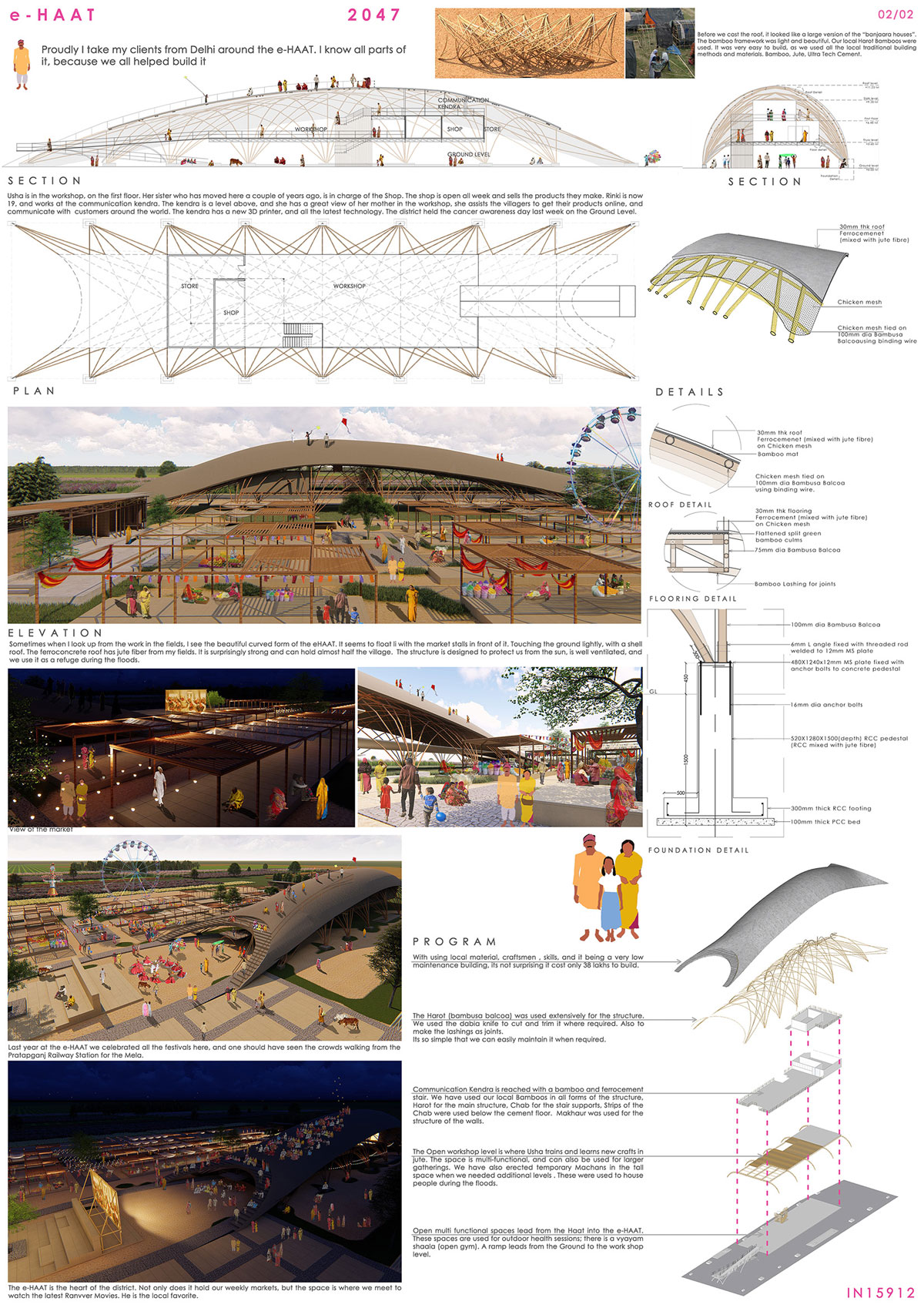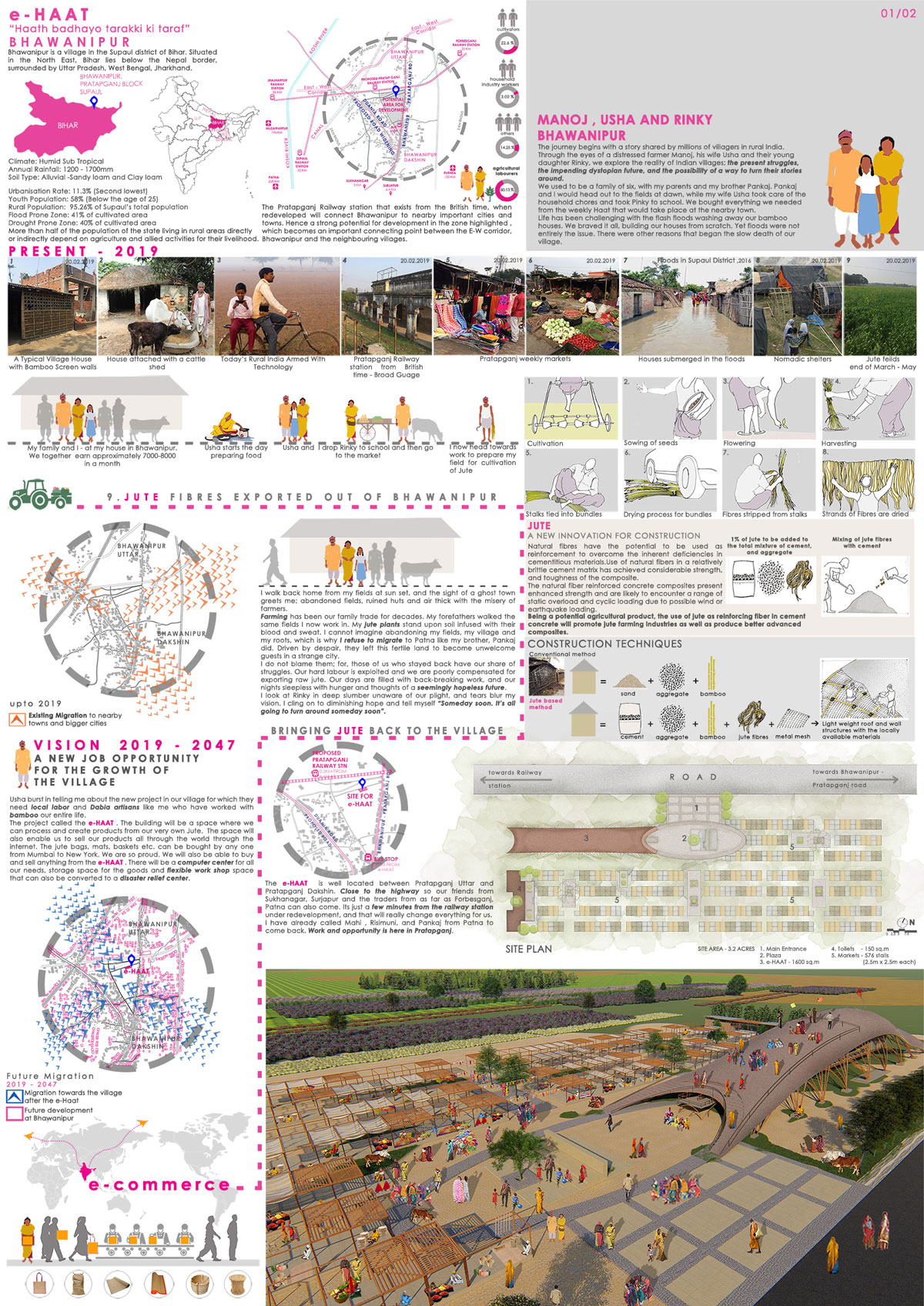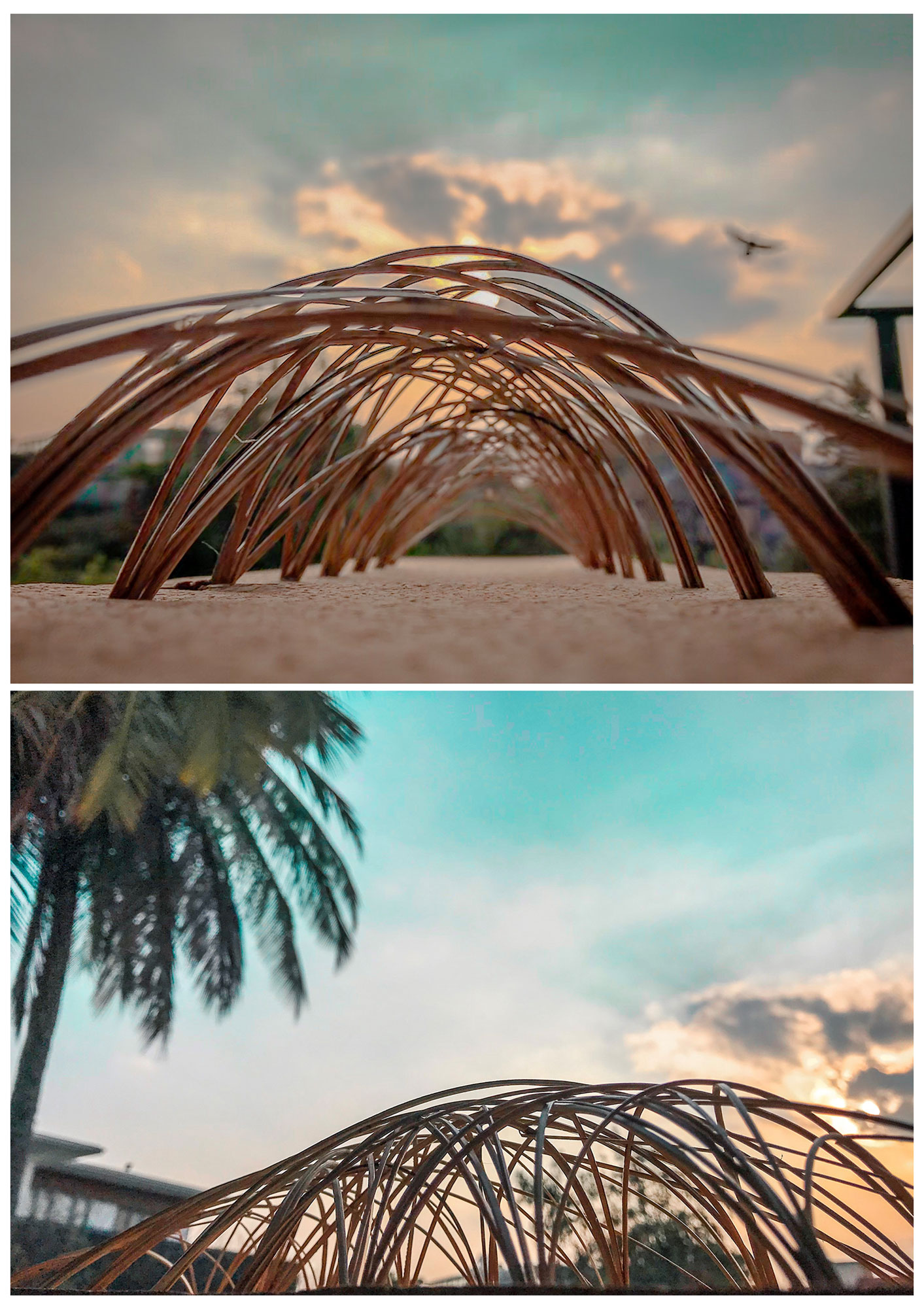Competition
Urban Design
Project Detail
2019
Sheets
StudioXS
Ultra tech 2019 - eHaat
We always like to challenge ourselves with projects that not only require our expertise but can also help us extend our contribution towards the betterment of our society and the country. This competition gave us one such opportunity where we made an attempt to design an intervention that would be built and run by the community. This self-sustainable model would collectively meet the function of being a community centre, an e-market and a disaster-relief centre.
Bhawanipur is a village in the Supaul district in Bihar, where the major source of income for the inhabitants is through Jute farming. The village faces a constant threat by the flooding of the Kosi river every year. With their bamboo houses washed away and their fields waterlogged, the inhabitants of the village are forced to rebuild their life from scratch each year. Additionally, the process of cultivating jute is a back-breaking one, whereas the monetary returns that the farmers yield are but meagre. Due to these reasons, several inhabitants have migrated to nearby cities in search of better employment opportunities and the ones who have stayed back are struggling relentlessly through each day.
Looking at these sociological and ecological issues, we questioned ourselves, how could we contribute and extend hope to the villagers and in some way address their issues, so that they wouldn’t be forced to leave their village. This was when the chord struck and we thought of an e-Haat, a space where the items made of jute, like bags, baskets, mats, etc. by local artisans could be produced and sold across the country and even overseas through e-commerce. In terms of architecture, we thought of reviving the local building methods with the help of the local labour and the Dabia artisans who are exceptional with bamboo, by newly introducing cement in the equation. The idea was simple, we would use bamboo as the framing material and Ferro-cement with jute fibres as the shell, with chicken mesh sandwiched in between. This would make the structure, cost-effective, strong and at the same time easy to build.
The multi-purpose structure would morph itself into a market during the day, a community centre during festivals and melas, and a disaster relief centre during the floods; all the while harbouring a feeling of self-sufficiency and closeness among the community.



